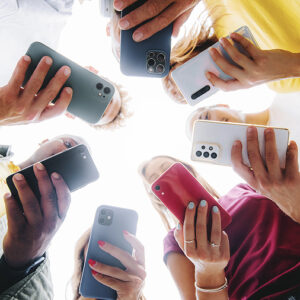Life in America today is life amid distraction. There are a thousand or more things that contribute to our daily distractions — the music we listen to, the irritating videos that play when we are trying to pump gas, the hot coffee we try to drink as we are driving, the electronic billboards that assault us with colorful images as we drive down the road. But the most serious distractions are, by far, our digital devices.
Our digital world is a distracted world, especially for youths. Parents have always worried about their children being distracted. When I was in middle school, our television broke. We only had one television and didn’t watch it much. My father said he would get the TV fixed as soon as possible. It turned out to be three years before the television returned. During that time, all three of us kids became voracious readers, and all three took up musical instruments.
I didn’t find out until I was an adult that our television was never broken. My father felt that it was too much of a distraction — even then. The struggle against distractions has been with us for a long time, but now it is much more complex because digital devices are even more seductive than TV was for my generation.
Today, all of us — especially young people since they have grown up with digital devices — are constantly bombarded by a seemingly endless stream of texts, images, sounds and notifications from various apps, including social media.
In addition, young people bounce back and forth from one app to another, seemingly without purpose. Young people just can’t focus on things long enough to make sense of them. According to Forbes magazine, 42 percent of American children have smartphones by age 10, and 91 percent have them by the time they are 14. According to the Centers for Disease Control and Prevention, people age 8 to 18 spend, on average, 7.5 hours a day in front of an electronic screen, with most of their attention given to games and videos.
As Mike Erwin points out in Harvard Business Review, “A significant volume of research has outlined the problem” of what he calls the “onslaught” of these distractions. In his book “Your Brain at Work,” David Rock points out that performance can decrease by up to 50 percent when a person attempts to focus on two mental tasks at once, and digital devices often pull us in more than two directions simultaneously.
But even more disturbing than this, research reveals that distractions reduce the brain’s ability to filter out irrelevancy in its working memory. We can’t think effectively if we can’t figure out what is relevant and what is not. This means young people are not giving their minds the space to work through problems on their own. It’s hard to think deeply about anything when you are constantly distracted.
Not only do the distractions of digital devices make it difficult for young people to think clearly, but they also affect the development of social skills. Many young people (not all, of course) don’t want to be cut off from the constant stream of stimulation provided by their digital devices. They often retreat into the world of their phones. The isolation imposed by social media is destructive. The pandemic did not cause the problem, but it made it worse. Multiple studies have found a strong link between heavy social media use and an increased risk for depression, anxiety, loneliness, self-harm and suicidal thoughts.
But beyond the effect of digital distractions on the young psyche, there are political implications. If young people need help focusing on tasks, if they struggle to think deeply, if they cannot distinguish between what is relevant and what is not, if they cannot relate to one another, then they also cannot be effective citizens. Our distracted world threatens to make us all — especially young people — less able to navigate our responsibilities to read, listen and evaluate the news. How can we vote effectively if we can’t focus on simple tasks?
Even if we stand by the Second Amendment, we cannot protect ourselves if our digital devices disarm our minds. But the good news is that we have the power to change things. All we need to do is control our digital devices and not let them control us. Take a walk. Read a newspaper. Have a conversation with a friend. It won’t be easy, but it can be done. We are all more powerful than we think we are.


